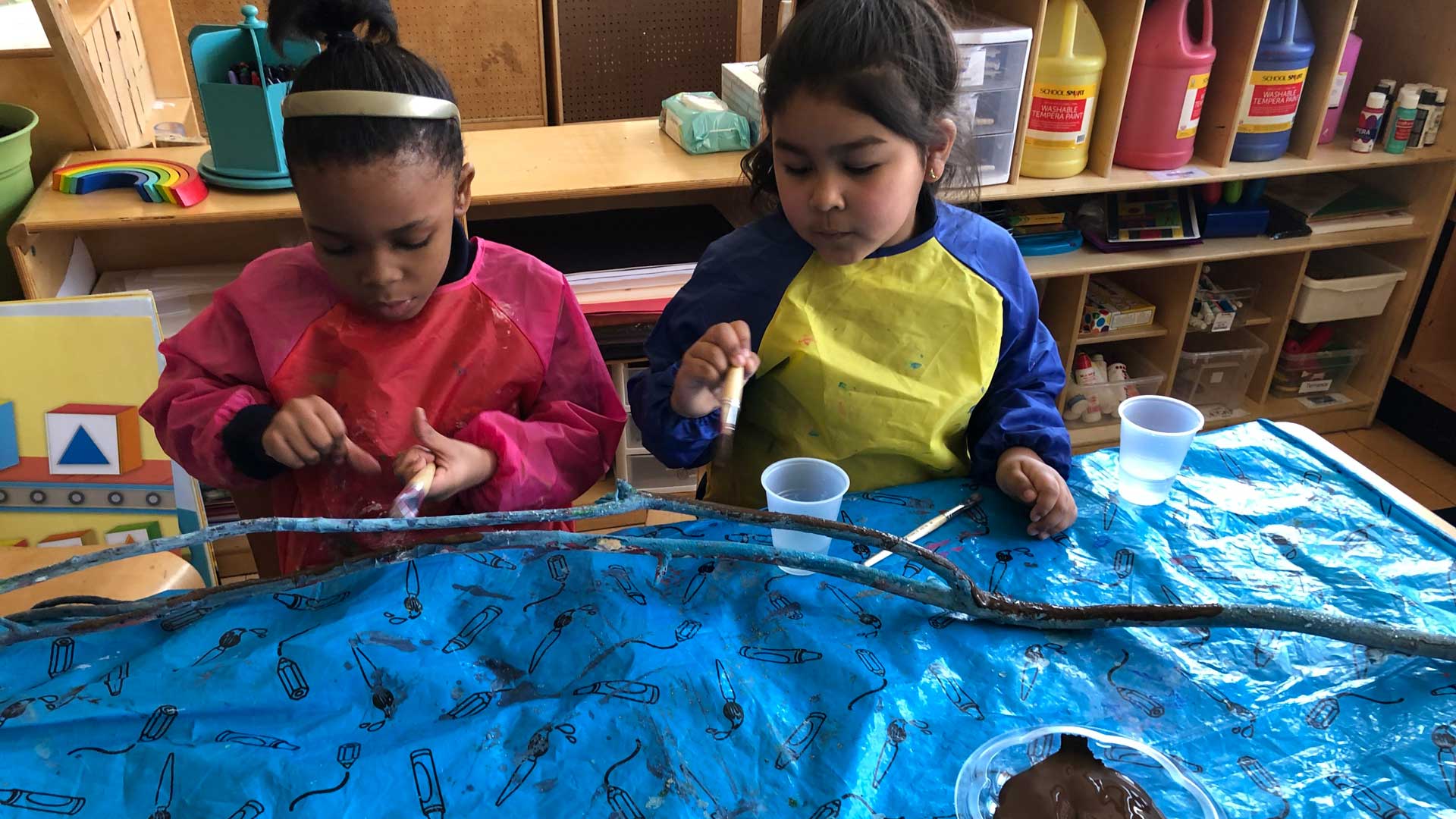What Is Process Art and Why Is It Important?
Teachers are often asked by parents why their children are “playing instead of learning” while in school. Parents may not realize that play and fun are essential components of brain and motor skills development, and so important in developing a love of learning and continued interest in school. Educational consultant and mentor, and Seedlings’ own Workshop director, Judy Cuthbertson is on a mission to help demystify play in the learning process and explain its importance to both educator and parent. Teachers: feel free to copy and paste the text below into communications home to parents of your students.

Changing seasons process art
Process art is the term used for when the process of making the art is more important than the end product. Why is this important for children to experience? Remember back to art class in your elementary school where the art teacher held up a painting of sunflowers or a clay sculpture of a cat? Most likely, you looked at the prototype and thought, “Well, I’ll never be able to make one like that.” And you were right! Your five or six-year-old self didn’t have the skills to copy anything a grown-up artist could create, but you could definitely benefit from the process of making art and so can your children! Here are some of the benefits:
Motor Skills
Fine motor skills improve by making art. Holding a brush, rolling Play-Doh, ripping paper, using scissors for cutting and squeezing glue from a bottle all help to develop the smaller muscles needed for writing. Large muscle strength (shoulders, arms and upper body) are also necessary for writing. Muscle development begins with the large muscles and moves down into smaller muscles. When a child has difficulty or needs help with fine motor skills, it’s beneficial to give them lots of experiences using their large muscles. Just how do we do that? Painting on an easel or any incline plane while standing is one good way. Another way is to have children carry items with weight – a bucket filled with water, blocks, laundry – anything that strengthens their shoulder and arm muscles, those that are vital for being able to hold a pencil and write.
Language Development
Children naturally put words to their creations – from simple labeling of shapes and color to more descriptive words that explain their choices and feelings. Art is often the place children start labeling; first by writing their names and later by labeling what they drew. This is a great place to ask open-ended questions about their creation, and this helps enrich vocabulary and oral language skills.
Decision Making
Creating art strengthens skills of problem-solving and critical-thinking. Children learn to represent the world through a variety of media and this, in turn, involves risk-taking, trial and error, and figuring out alternative solutions when things don’t go as planned. Children gain confidence in their choices when adults focus on the art of creating, not the end product.
Visual Learning
In this era of screen time for young children, and during remote learning, it’s more important than ever for children to have experience creating and feeling 3-D objects. The only way visual-spatial skills can be developed is through sculpting with clay, drawing or threading beads on a string. Screens can teach children to identify objects and numbers, but they can’t provide children experiences learning through their senses, the way we know children learn best. Making art gives children the chance of being inventive and of feeling positive about their choices, their ideas and themselves.
